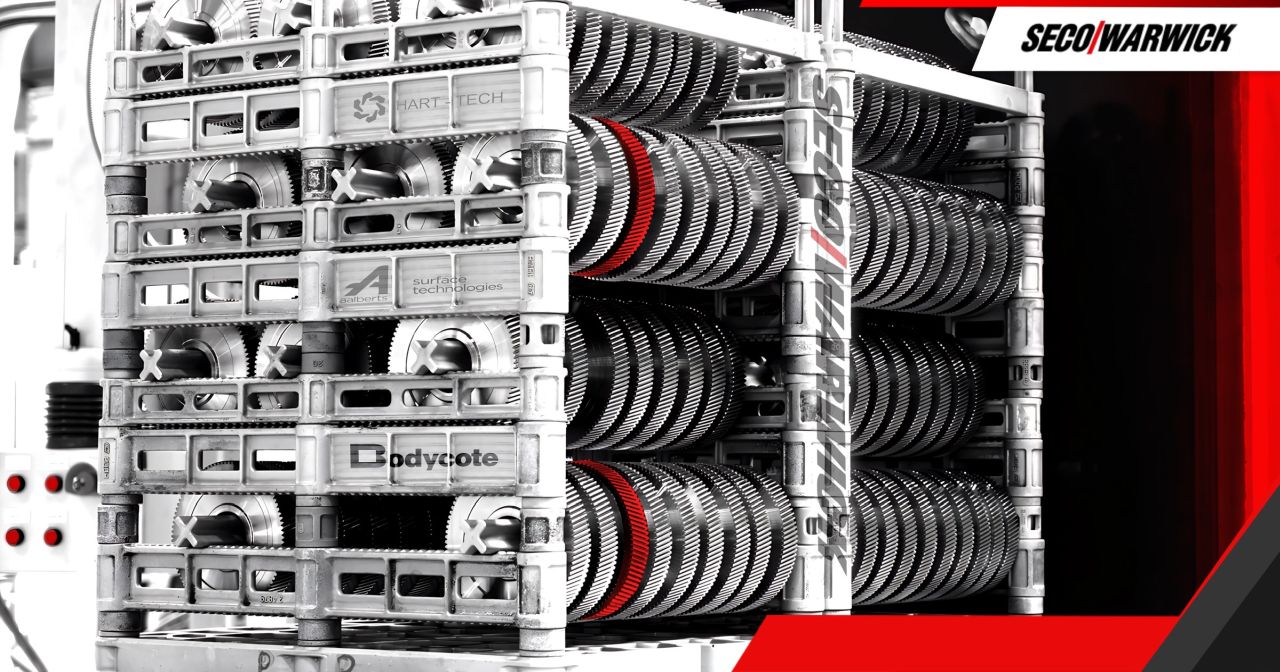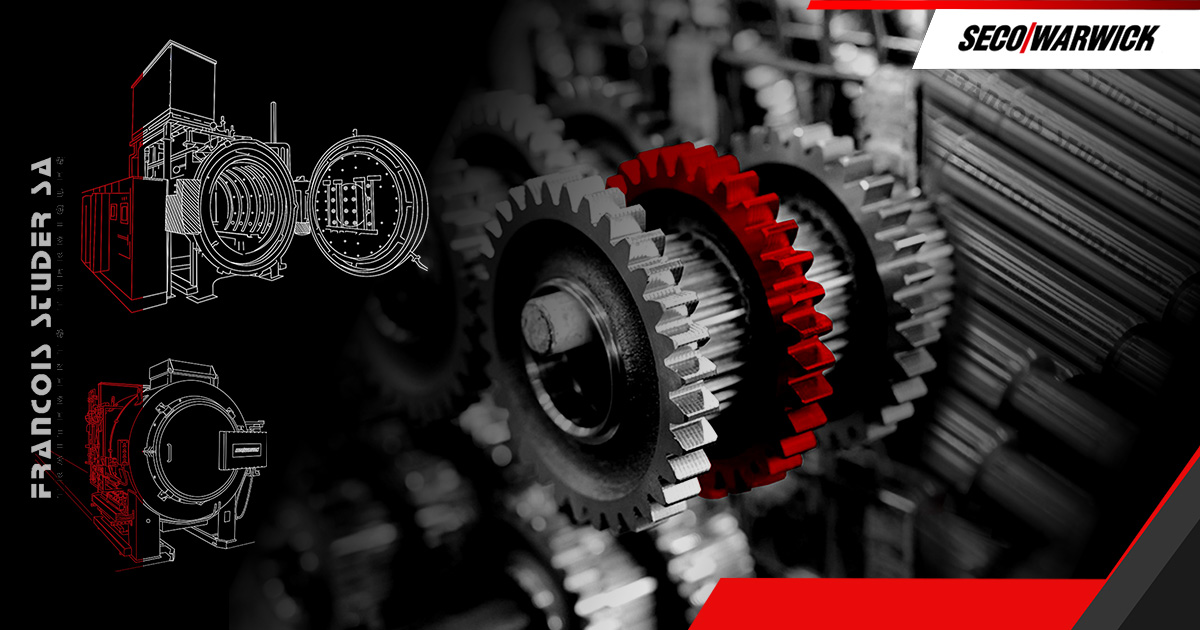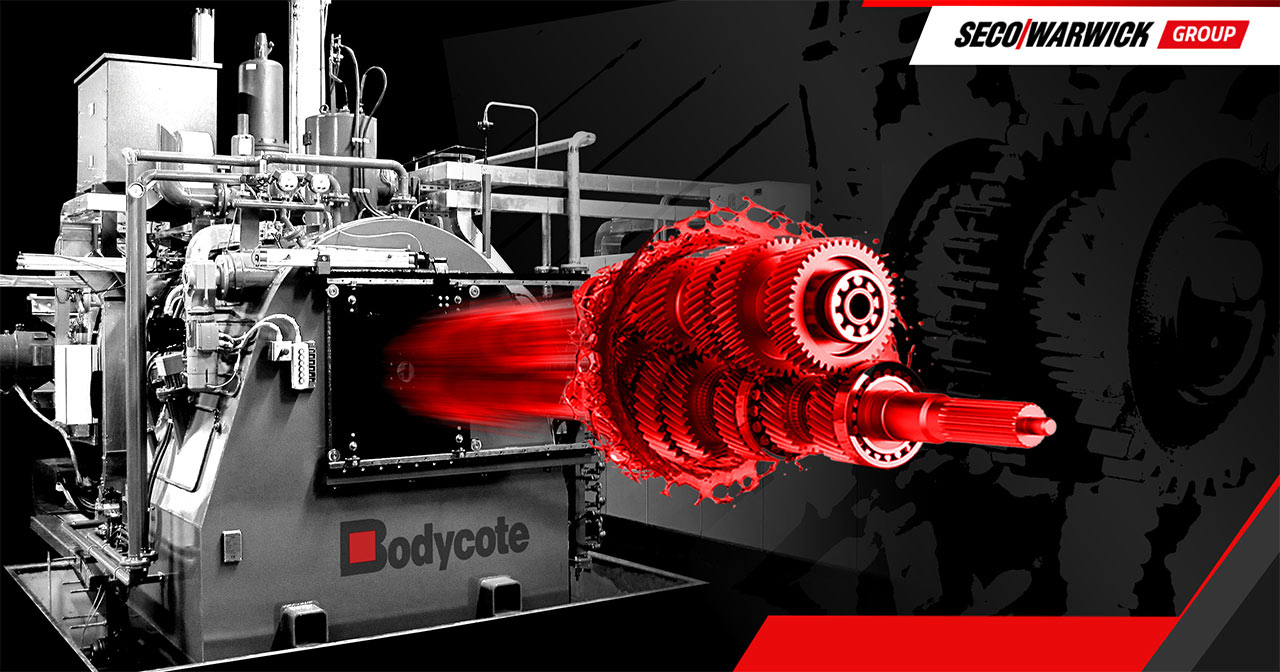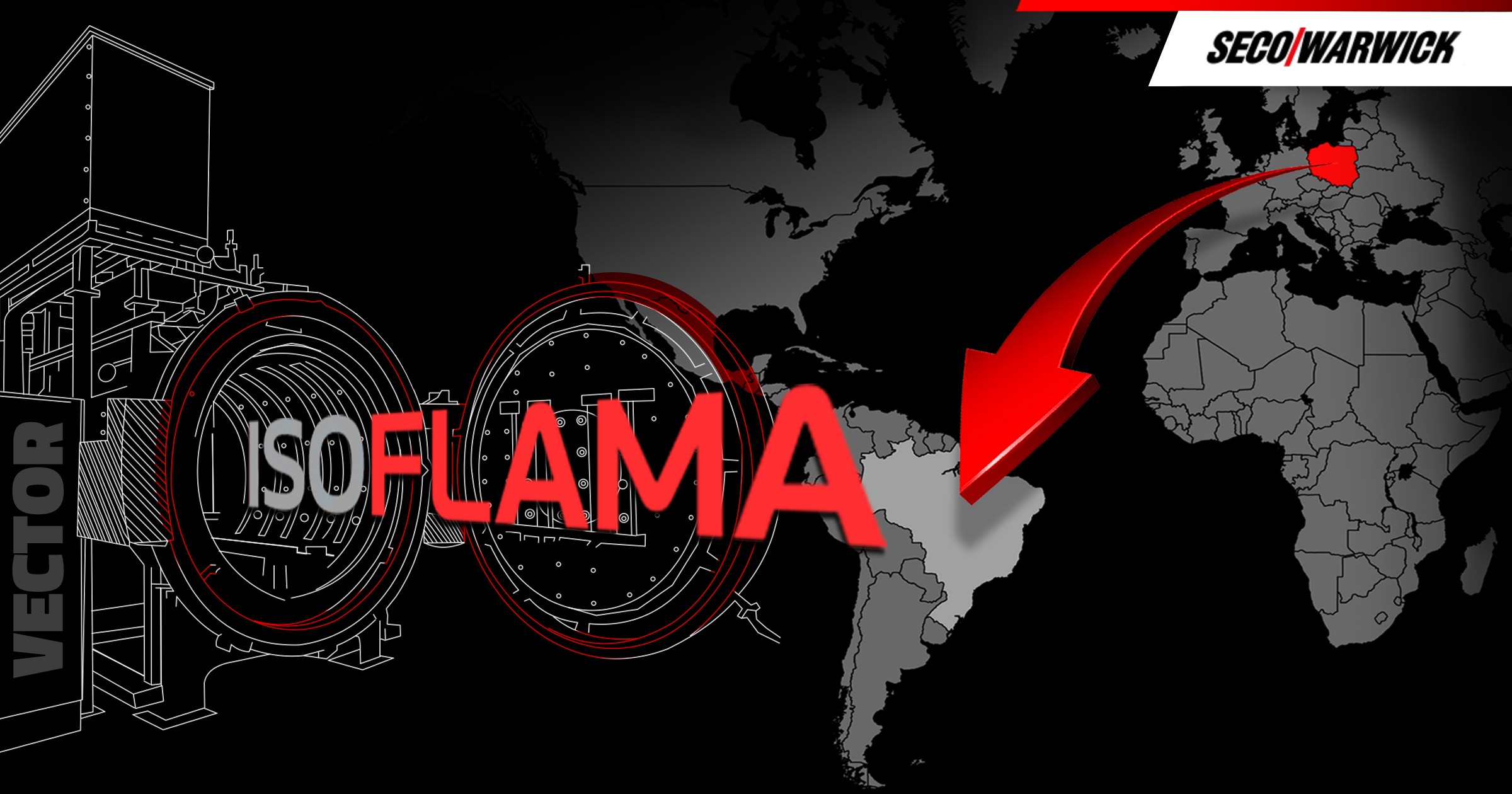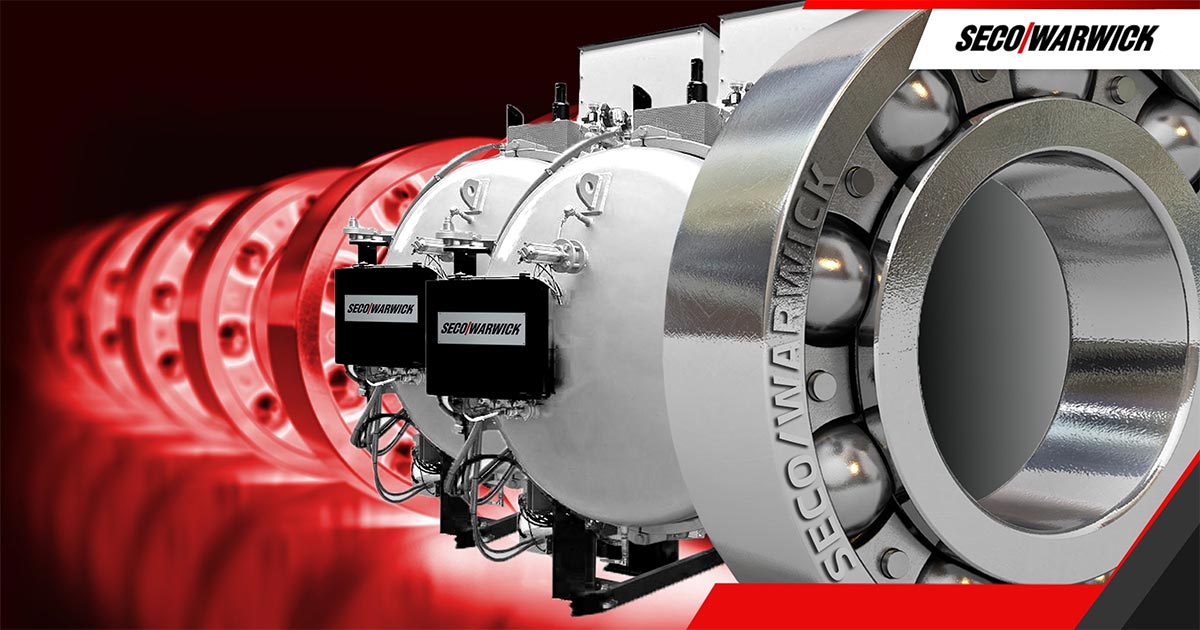The commercial heat treatment market is entering a decade of dynamic growth. According to the latest report, the global value of heat treatment services is expected to rise from USD 3.17 billion in 2025 to USD 7.04 billion in 2035, representing an average annual growth rate of 8.3 percent. The main drivers of this development are the aerospace and automotive industries, which are increasingly seeking materials with high strength, thermal resistance and stability over long operational cycles. In these sectors, the properties achieved through advanced heat treatment technologies are crucial for the safety and efficiency of entire constructions. As a result, there is a significant increase in the sales volume of metal processing equipment for this sector. The SECO/WARWICK Group plays a substantial role in this area.
Commercial heat treatment plants are among SECO/WARWICK Group’s key partners. Some have been working with the company for decades, and the solutions delivered support both large commercial heat treatment facilities with extensive machine parks, and smaller local plants or companies just starting their heat treatment operations. Among these clients are heat treatment plants that continuously expand their equipment park with SECO/WARWICK-branded devices. Service plants are frequently equipped with SECO/WARWICK technology processes, among them, tools and die, gearbox components, pipe, heat exchangers, jet engine parts, gas turbine components, as well as fuel lines, levers, gears, transmissions and battery coolers.
SECO/WARWICK has been cooperating with heat treatment plants worldwide for years, implementing solutions that allow flexible adaptation of processes to market requirements. A good example is the cooperation with HART-TECH, which began in 2010 with the purchase of a retort furnace for nitriding. Over time, the machine park was supplemented with CaseMaster Evolution multi-chamber vacuum lines, enabling low-pressure carburizing (LPC) with oil or gas quenching. Thanks to these systems, HART-TECH could offer the tooling industry processes that minimize component distortion, and further investments in Vector vacuum furnaces with gas quenching provided the company with even greater versatility. SECO/WARWICK technologies enabled the heat treatment plant to expand its operations and build process advantages, while the new generation of CaseMaster Evolution furnaces increased production efficiency and organizational flexibility.
“The commercial heat treatment market is growing at an impressive pace, and SECO/WARWICK delivers solutions that allow our partners to benefit from this potential. We can see how vacuum technologies like the CaseMaster Evolution and Vector are transforming the face of modern heat treatment plants, offering them greater efficiency, better quality, and flexibility in serving demanding industries such as aerospace and automotive. These investments pay off not only economically but also environmentally, which today is one of the most important challenges for industry,” said Sławomir Woźniak, CEO of SECO/WARWICK Group.
European Heat Treatment Plants with SECO/WARWICK
Another case study is the cooperation with theAalberts Surface Technologies group. In the Polish plant of this corporation, a three-chamber CaseMaster Evolution furnace was implemented in 2020. The device performs low-pressure carburizing and hardening in cycles lasting about three hours, achieving an annual capacity of five thousand tons. Operating in more than two thousand cycles per year, the furnace demonstrated almost 100% quality and high reliability, with a very favorable economic and ecological balance. Energy and process media consumption remains at a minimum, and the process does not generate carbon dioxide emissions. The Aalberts example shows that investing in modern SECO/WARWICK technologies not only increases efficiency but also supports sustainable production.
In 2025, the Bodycote plant in Siechnice invested in a new CaseMaster Evolution vacuum furnace—a two-chamber vacuum furnace with an oil cooling system and advanced FineCarb technology for vacuum carburizing. Thanks to this investment, the plant expanded its service range to include modern vacuum carburizing processes previously technologically unavailable, ensuring process cleanliness, increased quality, efficiency and better process management, as well as greater environmental benefits and reduced operating costs, an important aspect amid rising energy prices.
Bodycote Siechnice has been using SECO/WARWICK solutions for years, and the new vacuum furnace is already the 12th SECO/WARWICK device in the plant, although the first from the vacuum furnace range.
“We are indeed noticing an increased interest in the services of external heat treatment plants. That’s why we are constantly developing our technological offerings. Investing in modern vacuum equipment from SECO/WARWICK strengthens our company’s position as a trusted partner for the industry, providing top-quality heat treatment services,” said Dariusz Podgórski, Vice President of Bodycote Polska Sp. z o.o.
Commercial Heat Treatment Plants – A Growing Business
According to the Future Market Insights[1] report on the commercial heat treatment market, in 2025 the market value was estimated at about USD 3.17 billion as a reference point for further growth. Forecasts indicate that by 2035, the market value will rise to about USD 7.04 billion. The average annual growth rate (CAGR) for this period (2025–2035) is around 8.3%, demonstrating strong and stable market development dynamics. One of the main growth drivers is the increasing demand for high-strength and corrosion-resistant alloys, used in the aerospace, automotive and industrial sectors. In aerospace, these alloys are used to produce components such as landing gears, engines and structural elements of aircraft, due to the need for an advantageous strength-to-weight ratio, thermal stability, and material fatigue resistance. In the automotive industry, especially in the context of electric vehicles (EVs), these alloys support projects aimed at reducing vehicle weight, including drive system and power transmission components, aligning with manufacturers’ efforts to reduce emissions and increase energy efficiency. Additionally, nickel alloys and stainless steel are used in industries such as shipbuilding, power and energy.
Technological advances, such as the use of powder metallurgy, additive manufacturing and advanced heat treatments allow precise control of alloy microstructure. This enables the customization of material mechanical properties according to the requirements of specific applications.
Among end-user industries, automotive has the largest share of commercial heat treatment plant customers (40%), followed by aerospace (35%). The aerospace sector is developing the fastest (about 7% annually), thanks to advances in aircraft construction and growing air transportation. The region expected to generate the largest share in the future is Asia-Pacific, driven by the rapid development of the automotive and aerospace industries in China and India.
Commercial heat treatment plants face the daily challenge of working with a wide range of materials, processes and technologies. This is one of the most experienced groups in terms of vacuum heat treatment.
Today, the needs of heat treatment operators, based on experience, are operational efficiency, high quality processing, low production costs and the elimination of production downtime. Equipment such as the CaseMaster Evolution-T vacuum furnace or the single-chamber Vector vacuum furnace fits these requirements perfectly.
[1] https://www.futuremarketinsights.com/reports/precipitation-hardening-market
